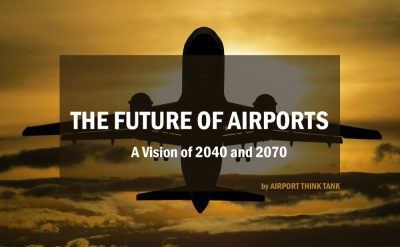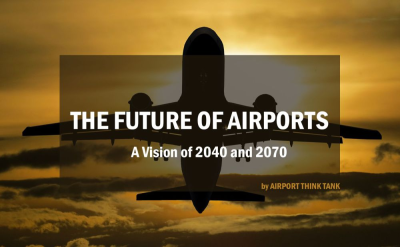
The Future of Airports: Human Resources and Education (Topic No. 11)
The Airport Think Tank of ENAC Alumni published last month the global analysis of The Future of Airports. Each week, discover a new focus on one of the 11 topics of this research initiative.
Most of the job descriptions of 2040 and 2070 will include requirements and missions that do not exist today. 50 years or even 20 years ago, airports had no Community Manager or Safety Manager. They are now essential functions in modern airports. Technology is a big driver as well. For instance, Airport GIS created jobs and has proven itself to be an invaluable tool for others with applications from asset management to aeronautical information. Many vital jobs of the 2040 and 2070 horizons do not exist yet. Moreover, we might not even be able to imagine them. The workplace itself is changing. Part of the jobs can now be performed from remote locations – including home – with the same or higher productivity. But humans are social animals. They need to gather and share together. Well-being at work and a collaboration environment are keys to performance and efficiency. Being a “great place to work” is also important to attract and retain talents. Studies show that younger workers prefer having the option to work from home, but at the same time, they want a higher level of interaction with their coworkers and their management. The future cannot be about systems but about humans with more freedom and flexibility, interacting with each other and advancing at a faster pace thanks to the systems. Workers are increasingly giving importance to the values of their organization, the meaning of their work, the interaction with their management, the collaboration with their teammates and stakeholders, and the flexibility they can have in managing their daily routine.
As new technologies are constantly appearing and the succession of innovational breakthroughs is accelerating, we will need a new approach for change and knowledge management. Technological shocks similar to the first IT revolution that required generations to learn and transition to computers and information systems not so long ago will be more frequent. Freshly graduated young professionals might already have to start learning new vital skills shortly after leaving school. Organizations might have to adapt as well. Change management will be part of regular operations. Successful airports will identify these emerging changes early, evaluate their effects on existing conditions, and adapt their organization and train their staff. It would not be surprising to have full-time change manager positions at many airport and stakeholder organizations. The next big revolution might be another “IT” revolution with the emergence of intelligence technologies. We are at the threshold of the introduction of artificial intelligence and machine learning on a large scale. Thinking about this second IT revolution as a modification of the way we interact with existing electronic devices and systems is missing the point. This will open a broad field of completely new applications and systems that we can barely envision as of today. Some of them will assist human operators. Some others might even replace human decision-makers. It will create new needs for specialists able to develop and maintain these systems, make sure they interact adequately, and interpret their output – such as what-if scenarios – for final decision-making. This is going to deeply change our interactions with our world, including the way we move, communicate, enjoy, consume and work.
Gender-based discrimination alone costs up to 12 trillion USD for the global economy – 16% of the global income. Women are historically underrepresented among the transportation workforce, and victim of biases during their career. Because the world is our guest, we must reflect on the diversity of our clients and our communities to remain competitive and innovative. A diverse workforce and management are crucial for embracing and addressing the complexity of the challenges to come. Diversity is not limited to gender and ethnicity, but it includes and is not limited to age, sexual orientation, special needs, cultural background, socioeconomic status, and non-airport or aviation experience. Studies have shown the clear benefits of diversity in organizations. While the 20th century fell short in delivering expectations of freedom, justice, and progress for all, we must not let this 21st century follow the same path. Our world cannot afford discrimination and biases. They do not only go against the very fundamental values of aviation that are expressed in the Convention of Chicago on Civil Aviation and are reflected in our diverse clients and the workforce. They prevent talents from emerging, innovations from blooming, and opportunities from coming true. To address the challenges of 2040 and 2070, let’s close now these gaps and get rid of biases once for all.
















No comment
Log in to post comment. Log in.